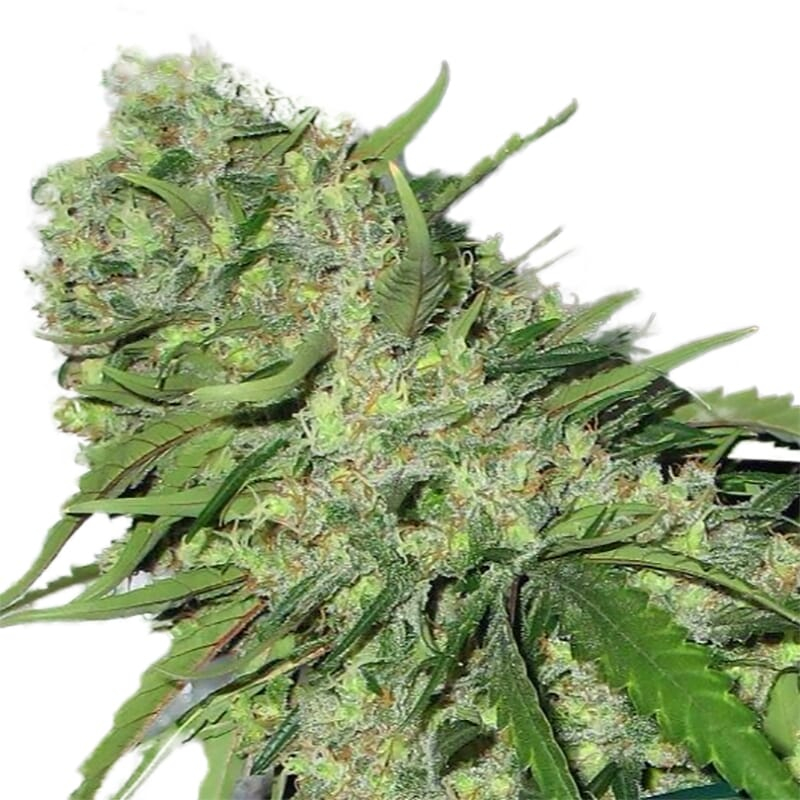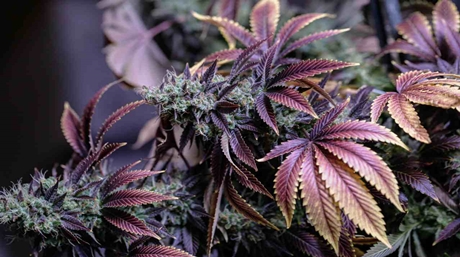Table of Contents
- What You Need To Know About Sulfur
- The Productive Cycle Of Sulfur
- Reasons Why the Weed Plant Requires Sulfur
- The Impact Of Sulfur And The pH Level On Planting Cannabis
- The causes Of Sulfur Deficiency
- How To Recognize Sulfur Deficiency In Weed Plant
- The Difference Between Sulfur And Nitrogen Deficiency In Cannabis Plants
- How To Solve Sulfur Deficiency In Weed
- Final Thoughts
Do you know that the cannabis plant requires Sulfur for its growth and development? Now you know! Sulfur is among the primary nutrients that the weed plant needs for its well-being. However, the plant does not require it in large quantity compared to other nutrients such as nitrogen.
This means that you should always be mindful of the amount of Sulfur you feed your plant with. When the weed plant absorbs an excessive amount of Sulfur, it can result in severe development cases that require attention to prevent possible losses.
Many people might not be knowing the role played by Sulfur in the growth and development of the weed plant. Do not hesitate; this article has compiled information from multiple sources to bring your clear information about everything you need to know about Sulfur and its impact on the cannabis plant.
Let’s roll together throughout the article!
What You Need To Know About Sulfur
Sulfur, calcium, and magnesium are considered the primary nutrients that the weed plant requires for successful growth. On the other hand, phosphorus, potassium, and nitrogen are considered the secondary nutrients that the wed plant needs.
Note that both plants and animals require a certain level of Sulfur for their well-being. Even though the weed plant requires the Sulfur element in a small quantity than other plants, the content has a significant role in growth for the plant.
It helps the weed plant produce chlorophyll, which is a combination of Amino acids and proteins. It also plays a significant role in boosting the plant resistance level, making it more vital to surviving in the constantly changing climatic condition.
Typically, Sulfur is available in a natural form that is yellow. Besides, it also available in different forms such as sulfates and sulfites. However, the available element of Sulfuris not soluble in water, making it hard for the cannabis plant to absorb the content through the roots.
Inside the soil, Sulfur is available in plenty in the form of sulfates. Note that this is the only type of Sulfur that the plant can absorb through the roots since it is soluble in nature. Therefore, the natural organisms must metabolize the elemental Sulfur into sulfate on the flip side, consumed by the plant.
Even though the metabolization method can work exceptionally, it takes too long for the sulfates to be produced. Therefore, the elemental Sulfur is now used as a fertilizer. In contrast, the Sulfur available in the commercial form is a nutrient ready to be consumed right away due to its soluble nature.
The Productive Cycle Of Sulfur
Similar to any other elements used by the plants, Sulfur replenishes itself throughout the ecosystem. The cycle begins with the withering of rocks that forces the rocks to release Sulfur components into the air, which is then changed into sulfate.
The sulfate produced is then consumed by the microorganisms and plants such as cannabis clones through the roots. The plants convert the absorbed Sulfur into an organic form that animals, including human beings, then consume.
When the living organisms die and decompose, they also release a certain amount of Sulfur into the environment in the form of sulfate. This content is then absorbed by the microorganisms available in the soil.
Also, Sulfur is produced when a volcanic mountain erupts as well as the evaporating water. This then gets into the soil when rain falls into the rivers and streams going to the oceans. It then gets back to the land through the geological uplifting that incorporates ocean sediments.
Reasons Why the Weed Plant Requires Sulfur
The elements of Sulfur play a significant role in the growth of the weed plant. It promotes the plant metabolism rate and elevates the growth rate of the roots. In addition, it stimulates the production of chlorophyll which retains the green color of the weed plant.
Sulfur also contributes to the general growth of the weed plant and its health aspect. This is because it promotes the absorption of water and mineral salts from the soil to the plant through osmosis. Besides, Sulfur is a form of amino acids and proteins that contributes to the plant’s health status.
All the above advantages of Sulfur on wee plants impact the vegetative growth of the cannabis plant, which is one of the significant stages that cannabis undergoes.
The Impact Of Sulfur And The pH Level On Planting Cannabis
When you are planting cannabis, Sulfur is always available upwards, although at a pH level of 5.5. However, the absorption of Sulfur only happens at an optimal level of 6.0. Therefore, anytime you are growing your cannabis plant, you realize the available level of Sulfuric below 5.5, then your plants are likely to suffer from a Sulfur deficiency.
The Junior Stage Requirements Of Sulfur
During the vegetative stage of growth in the cannabis plant, Sulfur is always a basic necessity. Lack of Sulfur during this stage will make the plant suffer from a lack of vitality and vigor, which impacts the effective rate of the plant.
This results in the growth of fewer branches and other growth problems caused by the lack of enough Sulfur in the soil. Note that this nutrient takes part in the photosynthesis process of the cannabis plant. Therefore, its absence has significant adverse effects on the plant and cannabis growers.
The Importance Of Sulfur During The Flowering Stage
During the flowering stage, the dictate of Sulfur is always high, and the absence of the nutrient results in a diminished end product. As a result, the growth of buds will be feeble, affecting the final product and quality. On some occasions, lack of Sulfur during flowering might even result in the death of all the flowers and the plant in general.
Sulfur Deficiency In The Cannabis Plant
According to cannabis experts, Sulfur is regarded as a mobile nutrient that moves gradually throughout the plant parts. Therefore, in case of any signs of deficiency, it occurs on the middle leaves of the cannabis plant. Nevertheless, what might be the cause of this condition?
The Causes Of Sulfur Deficiency
Deficient soils are said to be the leading cause of Sulfur deficiency among cannabis growers. Therefore, whenever you realize that the soil is poor, there are insufficient Sulfur levels to support the growth of the cannabis plant.
Applying wrong amounts of nutrients is also another causative agent of Sulfur deficiency. This is also referred to as inadequate dosage. Finally, the soil pH level is another matter that cannabis growers should be vigilant about since when the pH drops to less than 5.5, the soil lacks enough Sulfur.
How To Recognize Sulfur Deficiency In Weed Plant
The main symptom of sulfur deficiency is when you see some leaves of your cannabis plant are turning yellow. At some point, you might realize that your cannabis plants are suffering from a shortage of both Sulfur and nitrogen.
However, sulfur deficiency is the most common among cannabis plants. It is essential to mark the difference between Sulfur and nitrogen deficiency in your cannabis plants.
The Difference Between Sulfur And Nitrogen Deficiency In Cannabis Plants
Note that the leaves of the cannabis plant will only turn yellow from inside to outside during the late stages of infection. At some point, the entire leaf will discolor, indicating the final stage of infection, and even the whole plant dies.
Keep in mind that the sulfur deficiency affects more than the old leaves located at the bottom of the plant. On the other hand, the nitrogen deficiency only affects the old leaves at the bottom of the plant and does not exceed this point.
Cannabis growers should understand that it accumulates at the plant’s roots whenever they feed their weed plants with nutrients. After a certain period, the alkalinity and acidity of the rots is dispersed, giving room for the entry of deficiency symptoms.
Most deficiency issues in cannabis plants are not caused by the proper dosage of nutrients but caused by the pH levels on the soil and the plant roots. Also, when the deficiency affects the plant, it gives room for more nutrients related efficiency. This puts the health of your cannabis plant in danger.
How To Solve Sulfur Deficiency In Weed
There are a couple of ways you can adopt to solve sulfur deficiency in the weed plant. Remember that this will only depend on the cause of the deficiency symptoms. There is an insufficient level of Sulfur in the soil which can be solved by adding the necessary cannabis fertilizer or amend the soil with the required level of Sulfur.
There is another form of deficiency that is caused the acidity issues in the soil. This can be solved by the restoration of the acidity levels to an optimal range of 6.0. Different methods of solving deficiency in the cannabis plant are discussed below.
Soil
When you discover that the low amounts of nutrients are the reason behind the deficiency in your cannabis plant, consider increasing the consumption dose of feeds that you give tour cannabis plants. It would be best if you did this for a couple of feeds to provide the cannabis plants be on the safe side.
After increasing the dosage of the nutrients, the cannabis plants will begin displaying changes after a couple of weeks. First, cannabis researchers recommend dissolving one teaspoon full of the Epsom salt in a liter of warm water. Then, put the solution in a spray bottle and spray it on the lower side of the cannabis leaves.
On the other hand, when you note that underfeeding is the causative agent of deficiency, try and increase the feeds by approximately 0.2 points. This should be done for several days while observing the improvement of your cannabis plant.
Whenever you note a significant change in the cannabis plant, use a spraying pump and spray Sulfur directly on your cannabis plants. The cannabis plant will absorb the nutrient through the stomata and utilize it accordingly.
You can measure the soil’s acidity level and detect it below 5.5 and take the necessary precautions. You should always ensure that the acidity level is at an optimal range of 6.0 for the well-being of your cannabis plant.
Final Thoughts
Sulfur deficiency in the cannabis plant has numerous adverse effects. Always remember that the growth and development of the weed plant impact the final products. It would help if you always observed keenly to ensure that the cannabis plant does not lack any necessary nutrients that might affect its yields. In addition, it would help if you took the necessary precautions whenever you detect deficiency symptoms on your cannabis plant.















